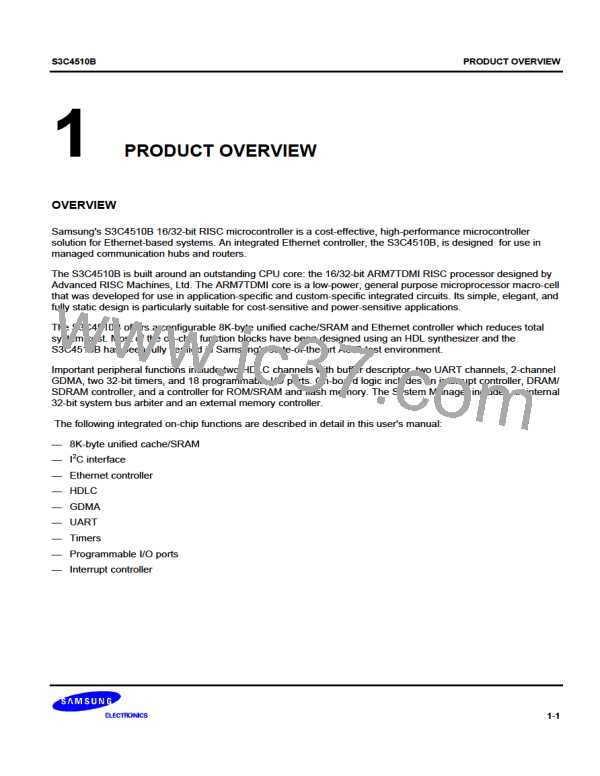S3C4510B
ETHERNET CONTROLLER
Destination Address Format
Bit 0 of the destination address is an address type designation bit. It identifies the address as either an individual
or a group address. Group addresses are sometimes called "multicast" addresses and individual addresses are
called "unicast" addresses. The broadcast address is a special group address in the special hex format: FF-FF-
FF-FF-FF-FF.
Bit 1 of the destination address distinguishes between locally or globally administered addresses. For globally
administered or universal (U) addresses, the bit value is "0". If an address is to be assigned locally, you must set
this bit to "1". For the broadcast address, this bit must also be set to "1".
Destination Address
MAC Address (3 bytes)
Block ID or OUI (3 bytes)
U/L
I/G
[0] Individual or group flag (I/G)
0 = Individual (= unicast) address.
1 = Group (= multicast) address.
[1] Universal or local address flag (U/L)
0 = Universal address.
1 = Local address.
Figure 7-16. Destination Address Format
Special Flow Control Destination Address
The current specification for full-duplex flow control specifies a special destination address for the Pause
operation packet. In order for the MAC to receive packets which contain this special destination address, the
address must be programmed in one of the CAM entries. This CAM entry must then be enabled, and the CAM
activated.
Some CAM entries are also used when generating a flow control packet using the SdPause bit in the MAC
transmit control register.
7-49

 SAMSUNG [ SAMSUNG ]
SAMSUNG [ SAMSUNG ]